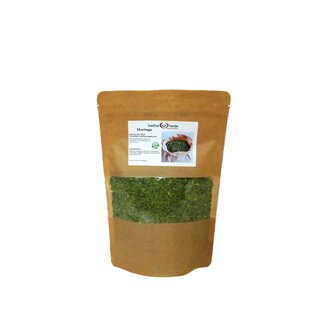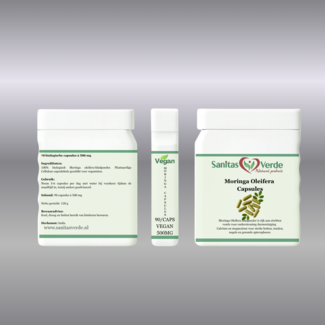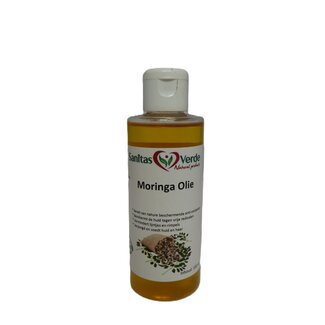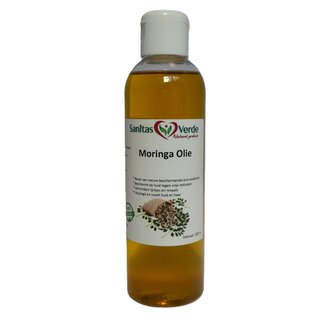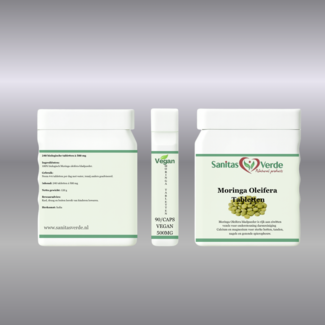Moringa Oleifera – The Tree of Life
Moringa Oleifera, also known as the Miracle Tree, is a tropical plant long valued in Asia and Africa. It can grow up to 12 meters tall, survive prolonged droughts and has been part of local diets and traditions for centuries. Almost every part of the tree has a use: leaves, seeds, flowers, pods, bark and roots.
Leaves & Powder
Moringa leaves are exceptionally rich in vitamins (A, C, E), minerals (calcium, potassium, magnesium) and proteins. They can be eaten raw, cooked, or dried and milled into moringa leaf powder, which:
-
stores well for years when packaged properly,
-
is easy to mix into smoothies, yoghurt, soups and sauces,
-
is also available in capsules or tablets.
Because of its dense nutritional profile, moringa powder is gaining recognition as an affordable, natural superfood.
Seeds & Oil
Moringa seeds yield a cold-pressed oil, naturally rich in antioxidants, omega 3-6-9 fatty acids and vitamins A and E. Moringa oil is:
-
100% natural and edible,
-
used in skin and hair care,
-
ideal as a massage or carrier oil in aromatherapy.
It absorbs quickly, keeps skin supple, adds shine to hair and is widely used in cosmetics such as creams and body butters.
Flowers, Pods & More
-
Flowers: honey-sweet, used for teas and infusions.
-
Young pods: meaty texture, nutritious, often cooked in curries.
-
Traditional uses: bark and roots have been valued in various cultures.
Sustainability
Moringa cultivation often supports small farmers. The tree grows rapidly, requires little water and contributes to sustainable agriculture and food security.
Conclusion:
Moringa Oleifera is pure, nutrient-rich and versatile – a true Miracle Tree.


